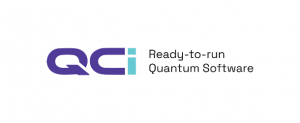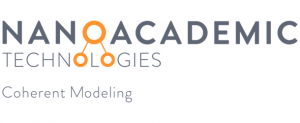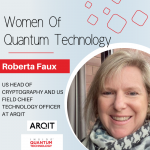Quantum News Briefs September 20: Xanadu and KISTI partner to create South Korea’s 1st quantum-classical hybrid computing infrastructure; Canada’s NRC-developed quantum sensors advance simulation software; Quantum Computing Inc. Federal subsidiary, Qi Solutions, signs 5-year Overarching Cooperative Research & Development Agreement (OCRADA) with U.S. Special Operations Command (USSOCOM); Canada’s NRC-developed quantum sensors advance simulation software + MORE

Quantum News Briefs September 20:
Xanadu and KISTI partner to create South Korea’s 1st quantum-classical hybrid computing infrastructure

Xanadu and the Korea Institute of Science and Technology Information have partnered to create South Korea’s first quantum-classical hybrid computing infrastructure for providing the regional scientific community with new research capabilities. Quantum News Briefs summarizes the announcement.
The quantum-classical hybrid circuit software development kit (SDK) developed through this partnership will establish the backend infrastructure to KISTI’s cloud service for connecting various classical and quantum hardware platforms. Xanadu’s open-source software library, PennyLane, and its high-performance quantum simulator, Lightning, will be employed as foundational tools for developing this SDK, empowering South Korean researchers with seamless access to hybrid computing resources and performing state-of-the-art research.
KISTI has played a pivotal role in bolstering South Korea’s global leadership in science and technology innovation. Over the past decade, KISTI has been actively involved in a wide range of quantum projects. These include research in computational designs of quantum logic devices, as well as extending the scope of quantum circuit simulations with parallel computing in large classical computing environments. Combining Xanadu’s and KISTI’s quantum expertise unlocks the potential to leverage the power of both classical and quantum computing technologies.
KISTI is a Korean national research institute that leads high performance computing (HPC) R&D activities in South Korea. Founded in 1962, KISTI has been participating in the national flagship project launched to develop a 50-qubit full-stack quantum computer, with a major role in the development of a parallelized quantum circuit simulator and a cloud service framework for quantum computing. Click here to read September 19 announcement in-entirety.
Quantum Computing Inc. Federal subsidiary, Qi Solutions, signs 5-year Overarching Cooperative Research & Development Agreement (OCRADA) with U.S. Special Operations Command (USSOCOM)

QI Solutions, a wholly owned subsidiary of Quantum Computing Inc. (“QCi” or the “Company”) (Nasdaq: QUBT), has signed a five-year Cooperative Research and Development Agreement (CRADA) with U.S. Special Operations Command (USSOCOM) to develop quantum technology applications in support of USSOCOM programs and requirements.
USSOCOM is the premier entity of the U.S. Department of Defense that deploys the world’s latest technology to conduct global special operations and activities as part of the Joint Force, in concert with the U.S. government interagency, allies, and partners, to advance U.S. policies and objectives worldwide.
QI Solutions (QIS) is a nontraditional Defense company with a portfolio of quantum technology including Quantum Photonic Detection and Ranging (QpDAR) sensors, computing, communications, cryptography, and advanced microchip solutions. QIS will work with USSOCOM’s Science & Technology (S&T) Directorate on the development of advanced quantum solutions for use by Special Operations Forces (SOF) in their unique mission roles.
“We are very excited and honored to have the opportunity to work in partnership with the Department of Defense and USSOCOM to develop unique Quantum Solutions based on our advanced technologies that will ultimately be used to protect our country,” said Sean Gabeler, President of QI Solutions.
Robert Liscouski, CEO of Quantum Computing Inc., added, “This is a significant opportunity for QCi and QI Solutions. OCRADAs demonstrate the DoD’s belief that advanced quantum technologies can be fielded to address critical problems – today, not in several years.” Click here to read September 19 announcement.
Canada’s NRC-developed quantum sensors advance simulation software
 Quantum simulators are radically different from traditional computer simulators because they take into account nanoscale interactions of quantum systems that behave in unexpected ways. Quantum simulation software predicts that behaviour, helping researchers understand and consider those differences at the design stage before sensors are fabricated in the lab. Until now, a comprehensive quantum simulation method for solid-state systems has eluded developers.
Quantum simulators are radically different from traditional computer simulators because they take into account nanoscale interactions of quantum systems that behave in unexpected ways. Quantum simulation software predicts that behaviour, helping researchers understand and consider those differences at the design stage before sensors are fabricated in the lab. Until now, a comprehensive quantum simulation method for solid-state systems has eluded developers.
A small Canadian company, Nanoacademic Technologies Inc., has tackled this challenge with an effective new method: solid-state quantum device simulation. This method can model semiconductor-based quantum device properties over a unique spectrum of features while being agnostic about the geometry and considered materials.
With the help of the quantum research team at the National Research Council of Canada (NRC) and contribution funding from the Collaborative Science Technology and Innovation Program, Nanoacademic enhanced its software code and has taken the product from the lab to the market much more quickly than originally anticipated.
Nanoacademic’s Quantum Technology Computer-Aided Design (QTCAD) calculates a variety of properties in almost any geometries of semiconductor-based spin-qubit devices. In addition to electron simulation, a new feature simulates quasiparticles such as holes. These offer remarkable physical insights into elements that may not even exist by modeling technological advantages specifically for hole-based quantum devices. Click here to read the original article on a Government of Canada’s website.
WISeSat.Space takes quantum leap with secure IoT satellites amid growing space cybersecurity threats
 WISeKey International Holding Ltd. a global leader in cybersecurity, digital identity, and Internet of Things (IoT) solutions operating as a holding company, announced today the launch of an ultra-secure picosatellite solution via its subsidiary WISeSat AG. This initiative is specifically designed for the Quantum-Ready Internet of Things (IoT) communications market.
WISeKey International Holding Ltd. a global leader in cybersecurity, digital identity, and Internet of Things (IoT) solutions operating as a holding company, announced today the launch of an ultra-secure picosatellite solution via its subsidiary WISeSat AG. This initiative is specifically designed for the Quantum-Ready Internet of Things (IoT) communications market.
The cybersecurity landscape of space is rapidly changing, and with it, the threats faced by satellites. A startling revelation last April saw hackers from Thales Alenia Space manipulating ESA’s OPS-SAT spacecraft, affecting its operations and imagery. As if that wasn’t alarming enough, a leaked U.S. intelligence report divulged China’s exploration into cyber weapons, capable of overtaking enemy satellites during wartime scenarios. This growing list of concerns also includes the significant disruption caused by the cyber-attack on Viasat’s broadband service last year.
WISeSat.Space, alongside SEALSQ, is addressing these concerns head-on with their groundbreaking collaboration. By incorporating the VaultIC408 secure element, they are fortifying each endpoint within the satellite network. This initiative promises businesses, irrespective of their size, a cost-effective, ultra-secure means to establish their digital ecosystems.
Seventeen WISeSat-ready satellites have already made their journey into space via SpaceX, part of an ambitious 80-satellite constellation that aims to offer unparalleled global IoT connectivity and a remarkable data latency of just 10 hours.
Embracing the quantum era, WISeSat.Space is fortifying its solutions against the potential threats posed by quantum computing. Implementing post-quantum solutions and robust devices, they’re setting the standard for secure multi-factor authentication and critical data transfer in the age of quantum computing.
WISeSat.Space AG is a subsidiary of the WISeKey Group at the forefront of developing innovative satellite technology. Click here to read the complete announcement in-entirety.
Sandra K. Helsel, Ph.D. has been researching and reporting on frontier technologies since 1990. She has her Ph.D. from the University of Arizona.



















